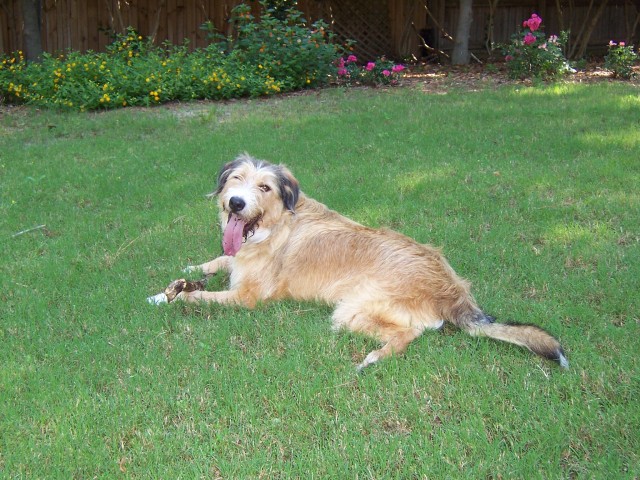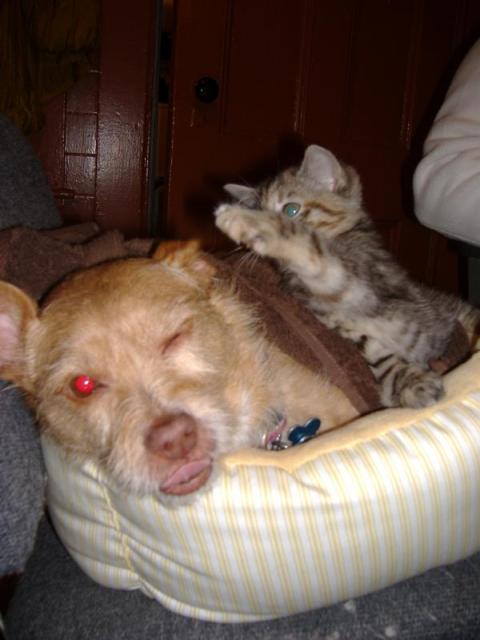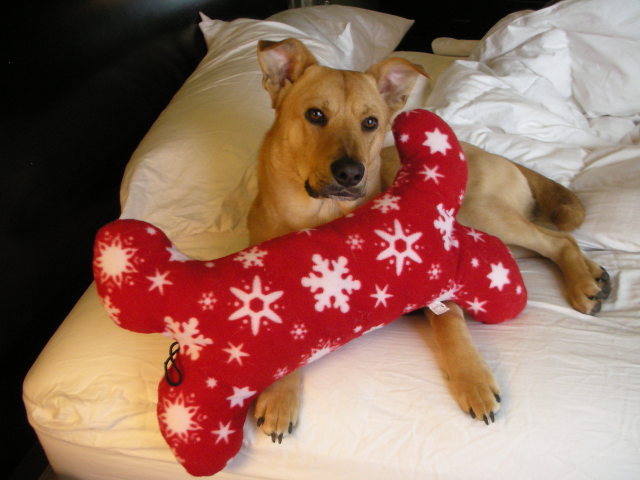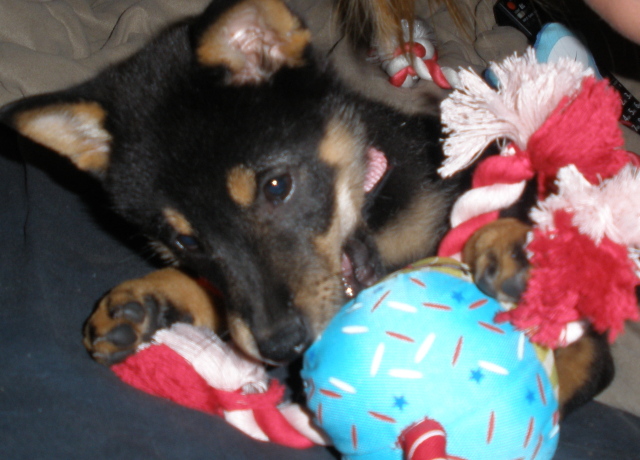QuestionQUESTION: I am a responsible, loving pet owner who has been trying to work with my 6
year old beagle-terrier rescue dog on car behavior. When he gets into the
car, he circulates from front seat to back seat,, cries verbally and loudly, and
has responded only moderately to my working with him on using chew toys
to displace his anxiety. He does not feel negative about the car, racing to it
with excitement and jumping in quite willingly. If we are in the car, we are
either going someplace to play to to run or to his dogsitter he adores.
Regardless, this anxious/excited response makes it a huge chore to take him
anywhere or to take this hugely human attached dog with me as I run
errands. So, in summary, he is a highly emotional dog who expresses his
excitement and maybe his anxiety by SCREAMING like an orangutan and
pacing. He tries to control it by playing with his toys, but still you can hear
his anxiety noises. This is a great dog who is largely obidient and my running
partner. Any ideas?
ANSWER: This may not BE anxiety; I can't see that from here. There are dogs that express their excitement (even happiness) with vocalization, and the Beagle is well known for vocalization. It's quite possible your dog is merely over stimulated and very excited about the end result of his trips! This isn't a dog (obviously) for casual excursions; that's not necessarily a bad thing, AND it can change over time. Instead of attempting to redirect his excitement to toys, etc., which he may be construing as REWARD for his vocalization, try crating him in a wire crate (if your car will allow this.) It's safer for the dog to travel this way (in case of accident) so there's an advantage to it, and often the confinement (sometimes with a sheet over the crate so the dog can't respond to outdoor stimuli) is THE cure. If you cannot use a crate in your vehicle, purchase a seat belt designed for dogs which will constrain his activity in the car (quite a distraction for the driver!) IGNORE his "screaming" altogether. If he stops and you can count to ten quickly between his vocalization and silence, verbally praise him. I can tell you that the very great dogs of the world don't always TRAVEL WELL.
---------- FOLLOW-UP ----------
QUESTION: Thanks for the response. I've tried both crate and harness and he gets so overwrought that he throws himself against the crate or nearly hangs himself on the harness. It's ironic, because he is so gentle and very well acclimated to his crate outside the car. If you have no further suggestions, there is no need to respond. I'm pleased to hear that your instinct is that excitement, rather than anxiety may be the basis for his screaming; my sense is that it starts out that way, and like a little kid who gets overexcited, it turns into something less pleasant. Guess it's just not in the cards to take him around town with me!
AnswerYou may be inadvertently rewarding this over excitement; even one touch or one word can be construed as reward, and if this is the case it will take some time to extinguish (because of response perseverance, in this case a vicious cycle of rewarded response that triggers physiological fight/flight mechanism). Also, you may be anxious (who can blame you? a careening, screaming dog isn't the best companion on a car ride!) Try this:
Very short ride (up and down the driveway or up and down the block), ignore the dog totally until you stop the car; wait until the dog is calm, make eye contact, praise, offer treat, leave the car. Repeat the next day with slightly longer "trip". Pay NO attention to the dog's vocalization or movements in the car (and since these are essentially "non trips" this will be easy and your anxiety level won't be engaged.) Sometimes frequent, short trips (slowly extended over days or even weeks), with clear reward for non-excitement at the end of the trip (or at both ends, i.e., end of driveway, reward for calm; back up to garage, reward for calm; end of street, reward for calm; back to house, reward for calm, etc.) helps the dog to obtain a calmer state over all (but very slowly.) It may take quite a number of these "trips" for your dog to maintain cognitive function and not lapse into a clearly adrenaline charged behavior (over which he has no control), but it is doable. Try this and report back in a few weeks.

 anxious dog
Question
Louie
Hi, We adopted a 2 year old male A
anxious dog
Question
Louie
Hi, We adopted a 2 year old male A
 My dog is shaking and hiding under my bed recently
QuestionRorrie and Pencil
QUESTION: My dog, Rorr
My dog is shaking and hiding under my bed recently
QuestionRorrie and Pencil
QUESTION: My dog, Rorr
 Very Scared Dog
Question
Happy
My dog is 17 months old and is a mixed b
Very Scared Dog
Question
Happy
My dog is 17 months old and is a mixed b
 My Shiba Inu
Question
Lola
I bought a registered Shiba Inu puppy fro
My Shiba Inu
Question
Lola
I bought a registered Shiba Inu puppy fro
 Agressive 1 yr old mini goldendoodle
Question
our millie
My husband and I got our min
Agressive 1 yr old mini goldendoodle
Question
our millie
My husband and I got our min